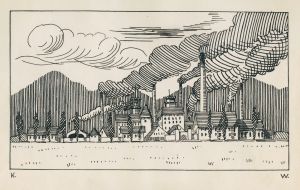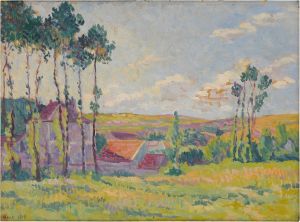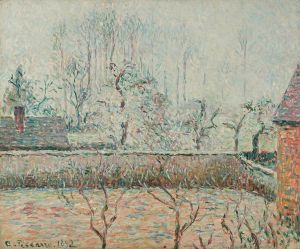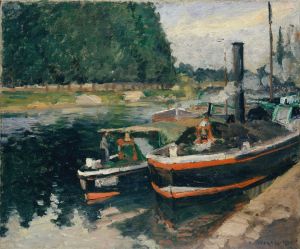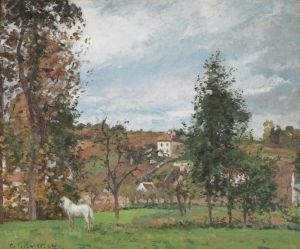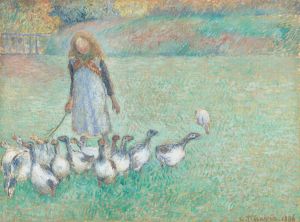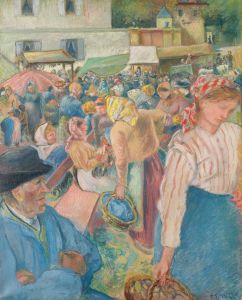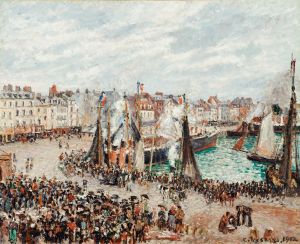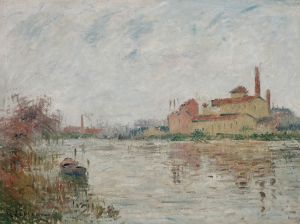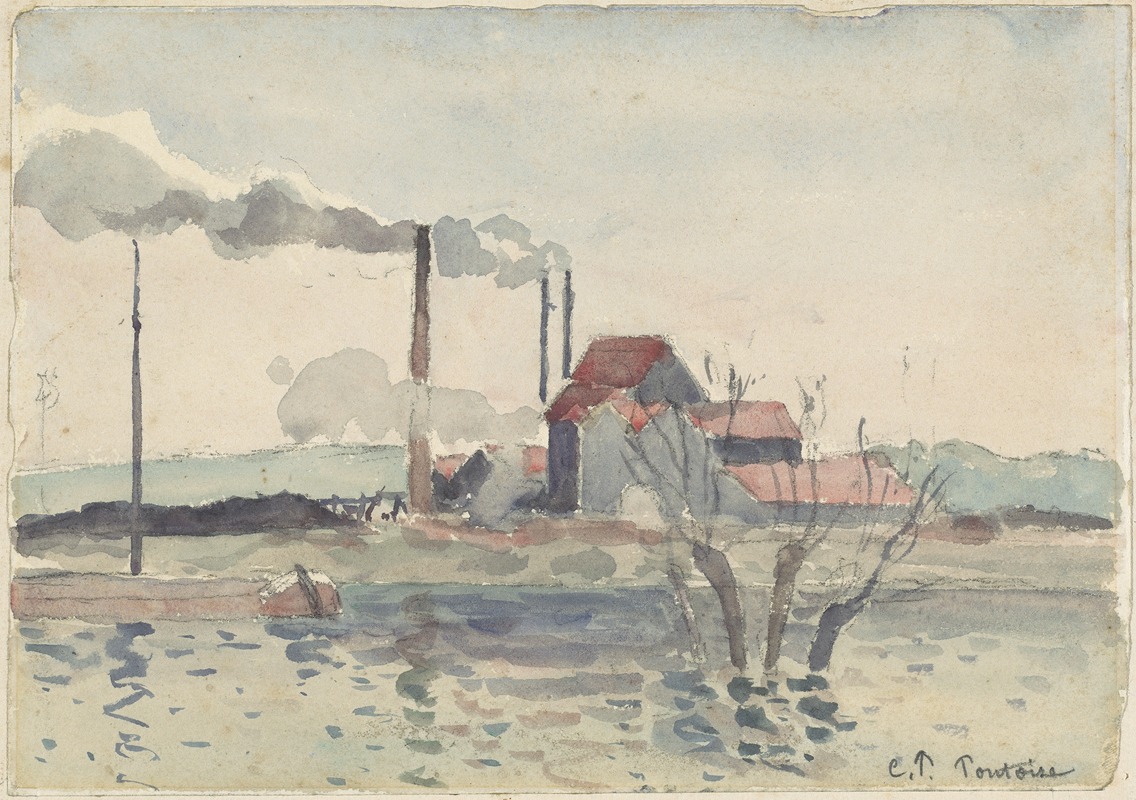
Factory on the Oise at Pontoise
A hand-painted replica of Camille Pissarro’s masterpiece Factory on the Oise at Pontoise, meticulously crafted by professional artists to capture the true essence of the original. Each piece is created with museum-quality canvas and rare mineral pigments, carefully painted by experienced artists with delicate brushstrokes and rich, layered colors to perfectly recreate the texture of the original artwork. Unlike machine-printed reproductions, this hand-painted version brings the painting to life, infused with the artist’s emotions and skill in every stroke. Whether for personal collection or home decoration, it instantly elevates the artistic atmosphere of any space.
"Factory on the Oise at Pontoise" is a painting by the renowned French artist Camille Pissarro, created in 1873. Pissarro, a pivotal figure in the Impressionist movement, is celebrated for his landscape paintings that capture the essence of rural and urban life in 19th-century France. This particular work exemplifies his interest in industrial themes and the changing landscape of the time.
The painting depicts a factory situated along the Oise River in Pontoise, a town in the Île-de-France region, where Pissarro lived for several years. Pontoise was a frequent subject in Pissarro's work, as he was deeply inspired by its picturesque scenery and the interplay between nature and industrial development. The factory, a symbol of the burgeoning industrial age, is set against the tranquil backdrop of the river and surrounding landscape, illustrating the coexistence of industry and nature.
Pissarro's technique in "Factory on the Oise at Pontoise" reflects the Impressionist style, characterized by loose brushwork and a focus on light and atmosphere. The painting captures the subtle effects of light on the water and the factory buildings, using a palette of muted earth tones and soft blues. This approach allows viewers to experience the scene as a fleeting moment, a hallmark of Impressionist art.
The composition of the painting is carefully balanced, with the factory positioned slightly off-center, drawing the viewer's eye along the riverbank and into the distance. Pissarro's use of perspective and depth creates a sense of space and movement, inviting the viewer to explore the landscape. The inclusion of the river not only adds a dynamic element to the composition but also serves as a metaphor for the flow of time and progress.
"Factory on the Oise at Pontoise" is significant not only for its artistic merit but also for its historical context. During the late 19th century, France was undergoing rapid industrialization, and artists like Pissarro were keenly aware of the impact of these changes on the environment and society. By choosing to depict a factory, Pissarro acknowledges the industrial transformation while maintaining a sense of harmony with the natural world.
This painting is part of a broader body of work by Pissarro that explores the theme of industrialization. His ability to capture the beauty of everyday scenes, whether rural or industrial, has earned him a lasting place in art history. Pissarro's work continues to be celebrated for its innovative approach and its ability to convey the complexities of modern life.
Today, "Factory on the Oise at Pontoise" is housed in a private collection, making it less accessible to the public compared to some of Pissarro's other works. However, it remains an important example of his contribution to the Impressionist movement and his exploration of contemporary themes. Through this painting, Pissarro offers a glimpse into a pivotal moment in history, where the natural and industrial worlds intersect, captured with the sensitivity and skill that define his oeuvre.





